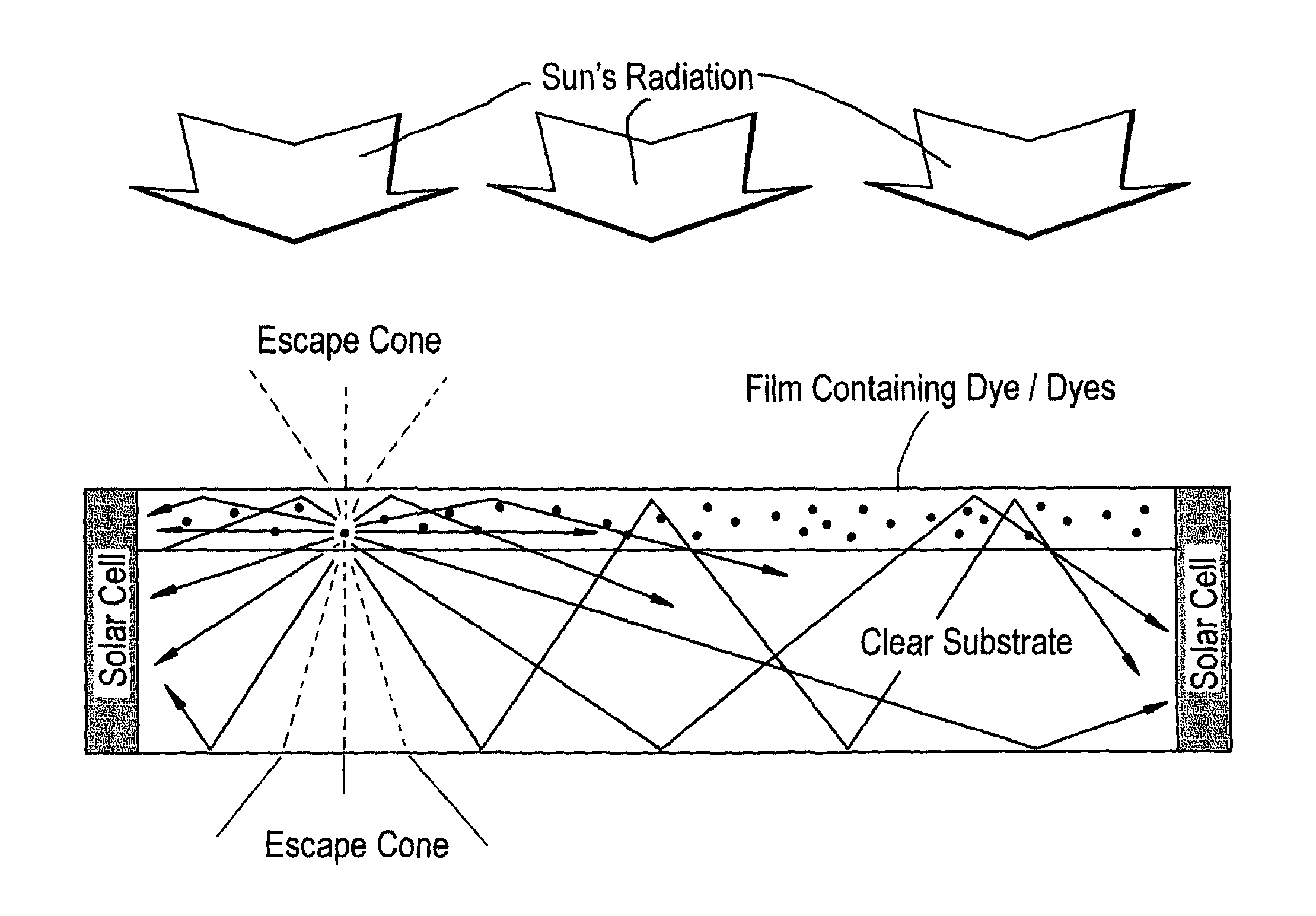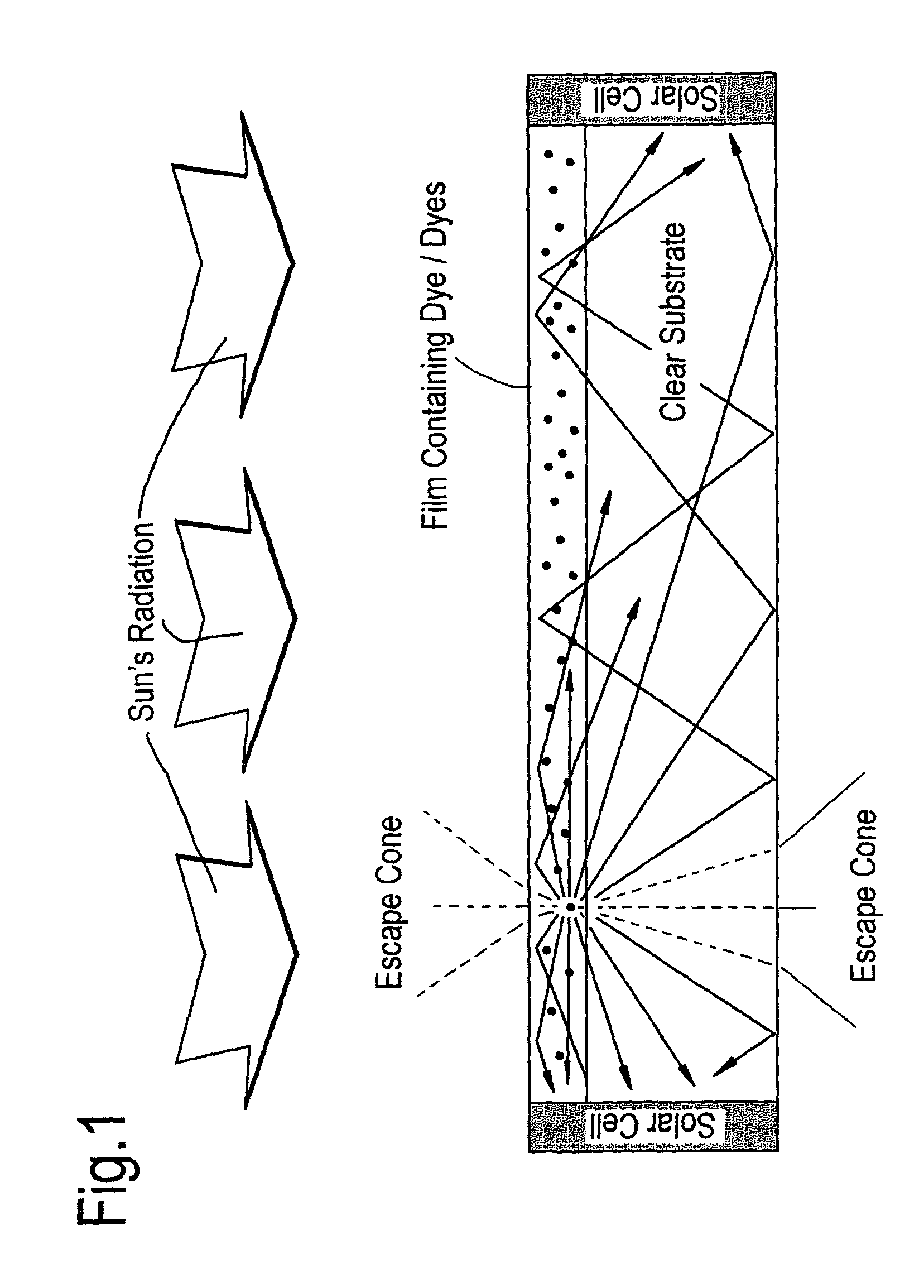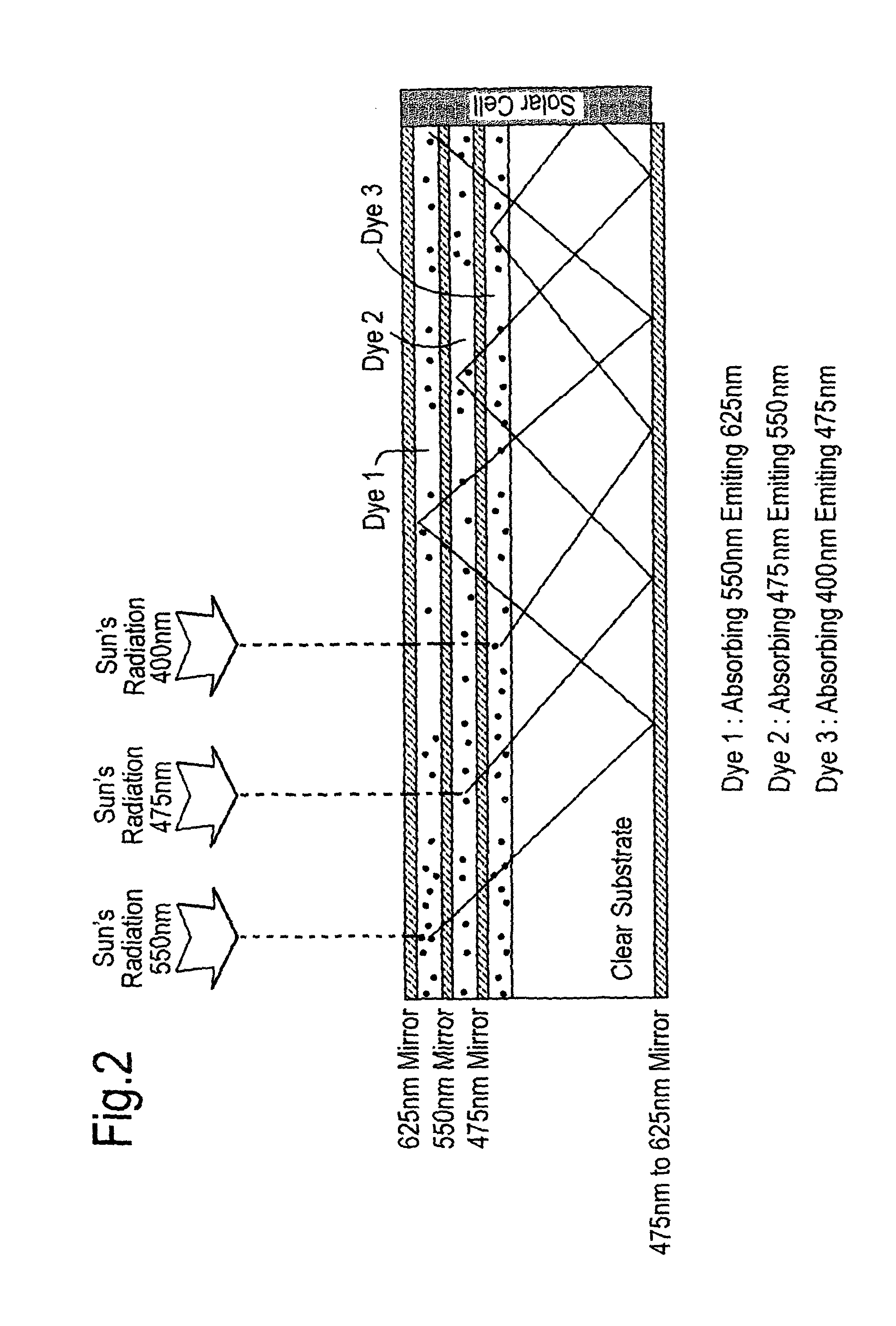Luminescent solar concentrator
a technology of luminescent solar concentrator and concentrator, which is applied in the direction of photovoltaics, electrical apparatus, and semiconductor devices, can solve the problems of inadequate methods, inadequate light to be a practical solution, and rapid diminishing of conventional energy supplies in the world,
- Summary
- Abstract
- Description
- Claims
- Application Information
AI Technical Summary
Benefits of technology
Problems solved by technology
Method used
Image
Examples
example 1
Energy Losses in Prior LSC Devices
[0103]FIG. 1 schematically depicts the principle of operation of previous LSC devices, which typically comprise a single film 1 containing one or more luminescent compounds 2, 3 positioned on a clear substrate 4, which result in a lack of collection (depicted as an escape cone 5 in the figure) of some of the light emitted by the compounds subsequent to irradiation of the device by the sun. Such light is reflected out of the device; and therefore is not collected within the solar cells positioned proximally thereto, and represents a significant loss of energy in such systems.
example 2
An Embodiment of an LSC Device of this Invention
[0104]FIG. 2 schematically depicts an embodiment of a device of this invention. The devices of this invention, in marked contrast to previous devices, comprise two or more luminescent compounds, but each luminescent compound is located within a film which is apically bounded by a wavelength-selective mirror, which is reflective for light of a wavelength corresponding to that at which the proximally located compound emits light thereby specifically preventing or significantly diminishing the existence of an “escape cone”.
[0105]The device comprises a first film 6, apically bounded by a first mirror 7, and containing a first luminescent compound, 8, which compound emits light at a selective-wavelength which corresponds in value to that which is reflected by the apically located mirror 7. A second film 9 is positioned beneath the first film, and a second selective-wavelength mirror 10 is positioned there-between. The second film incorporat...
PUM
 Login to View More
Login to View More Abstract
Description
Claims
Application Information
 Login to View More
Login to View More - R&D
- Intellectual Property
- Life Sciences
- Materials
- Tech Scout
- Unparalleled Data Quality
- Higher Quality Content
- 60% Fewer Hallucinations
Browse by: Latest US Patents, China's latest patents, Technical Efficacy Thesaurus, Application Domain, Technology Topic, Popular Technical Reports.
© 2025 PatSnap. All rights reserved.Legal|Privacy policy|Modern Slavery Act Transparency Statement|Sitemap|About US| Contact US: help@patsnap.com



